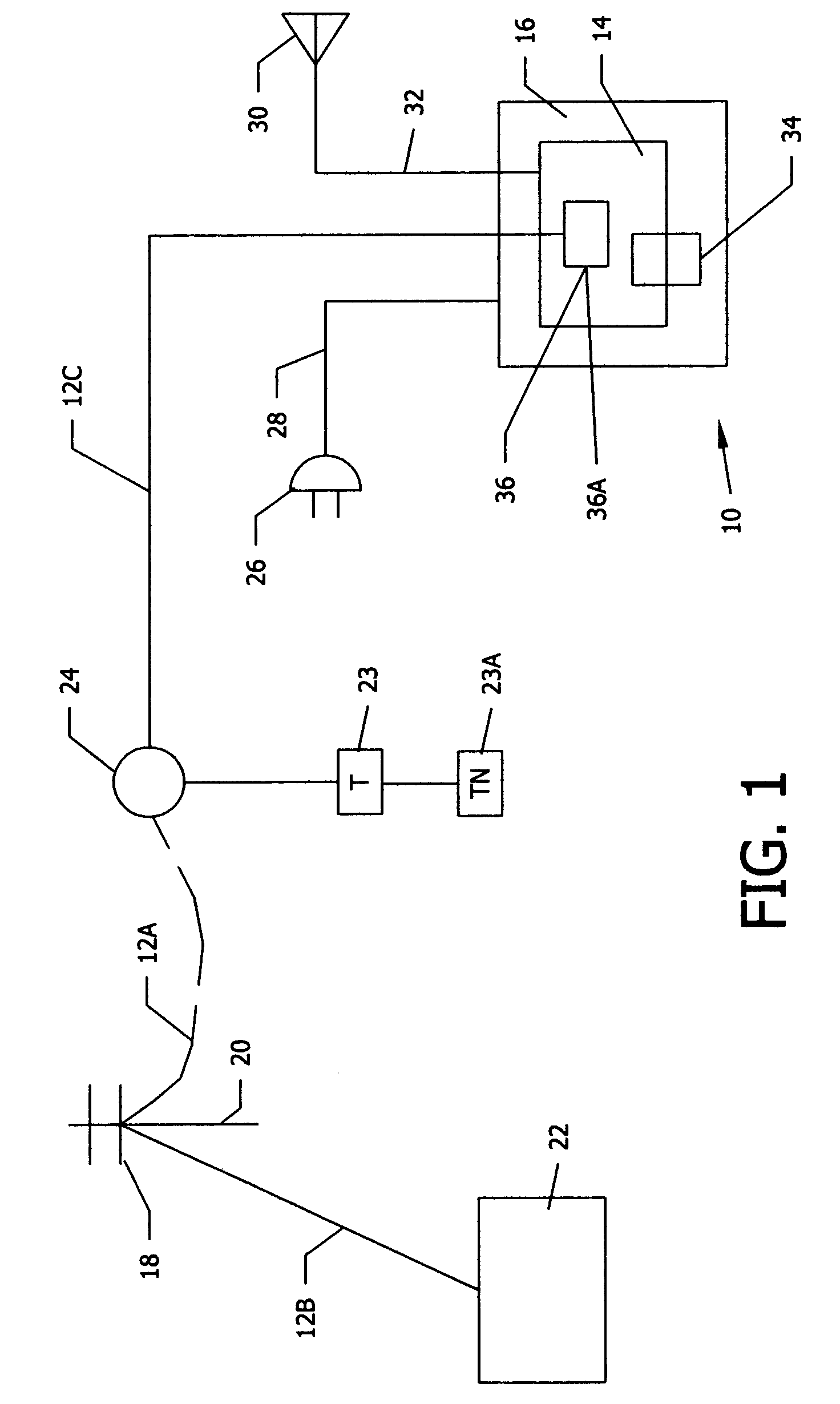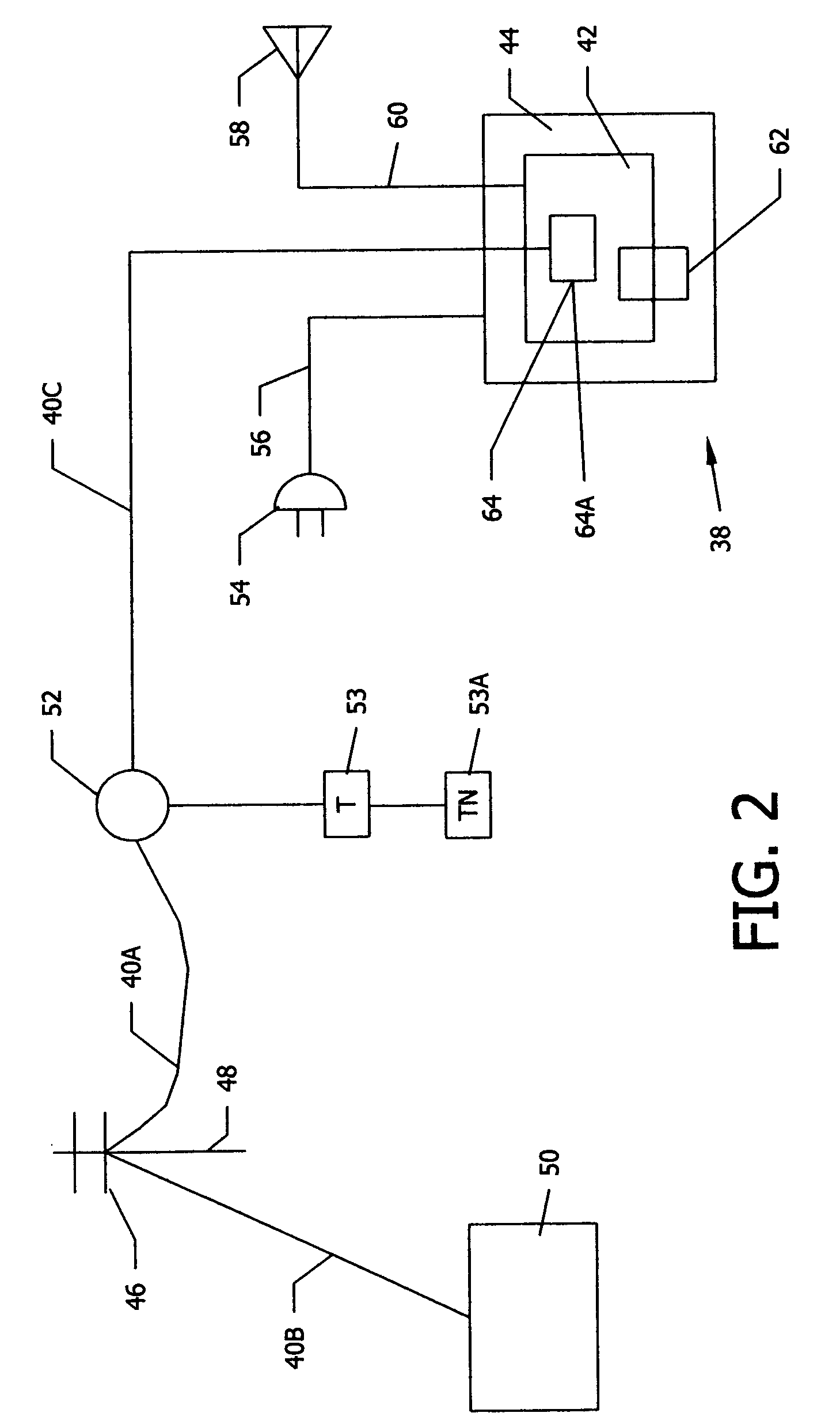Satellite TV security system
a satellite tv and communication system technology, applied in television systems, closed circuit television systems, analog secracy/subscription systems, etc., can solve problems such as unidirectional satellite tv systems, inability of satellite tv providers to detect piracy, and inability to operate existing satellite tv communication systems
- Summary
- Abstract
- Description
- Claims
- Application Information
AI Technical Summary
Benefits of technology
Problems solved by technology
Method used
Image
Examples
Embodiment Construction
[0056] Reference is now made to the drawings and in particular to FIGS. 1-6 in which identical or similar parts are designated by the same or similar reference numerals throughout.
[0057] A schematic view of a basic satellite TV security system 10 in FIG. 1 shows an optional standard land based telephone line wire 12A that connects a satellite TV set top box receiver, that is, an addressable integrated receiver / decoder (IRD) unit 14 positioned within a TV set top box 16 connected to a telephone pole connector 18 on a telephone pole 20. TV set top box 16 is usually positioned on top of the TV set (not shown) of the satellite TV subscriber. Another standard landline based telephone wire 12B connects a satellite TV service provider 22 to telephone pole connector 18. Optional telephone wire 12A is connected to a house telephone jack 24 from where a house telephone wire 12C extends in operative connection to IRD 14. Telephone wires 12A, 12B, and 12C together comprise a standard telephone...
PUM
 Login to View More
Login to View More Abstract
Description
Claims
Application Information
 Login to View More
Login to View More - R&D
- Intellectual Property
- Life Sciences
- Materials
- Tech Scout
- Unparalleled Data Quality
- Higher Quality Content
- 60% Fewer Hallucinations
Browse by: Latest US Patents, China's latest patents, Technical Efficacy Thesaurus, Application Domain, Technology Topic, Popular Technical Reports.
© 2025 PatSnap. All rights reserved.Legal|Privacy policy|Modern Slavery Act Transparency Statement|Sitemap|About US| Contact US: help@patsnap.com



